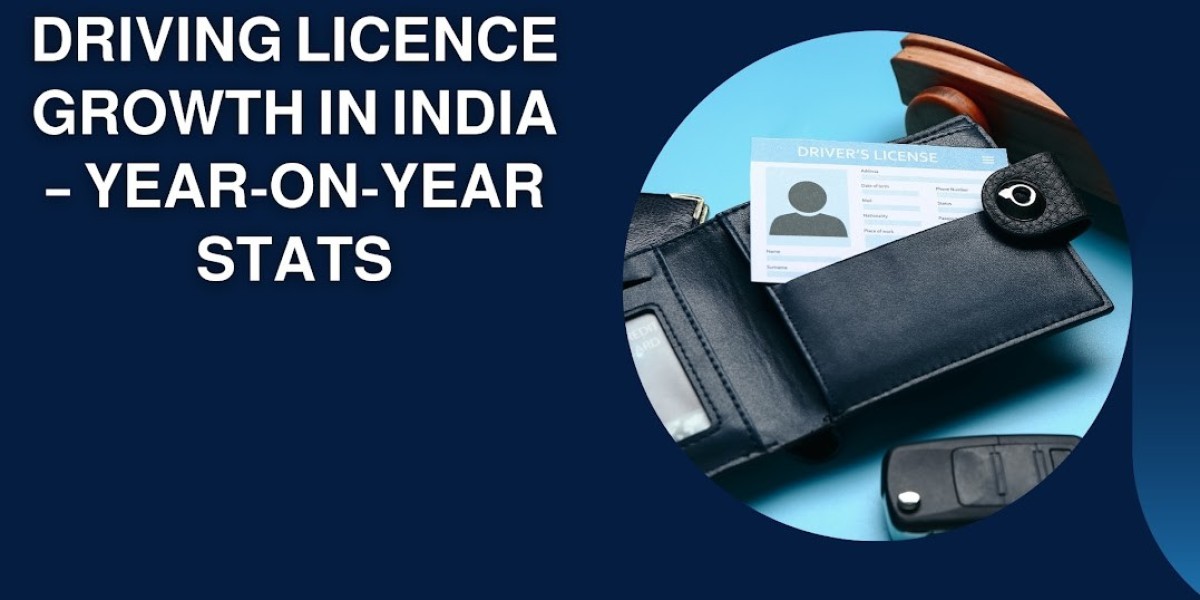India has experienced a significant year-on-year growth in the issuance of driving licence, reflecting the nation's rapid urbanization, economic development, and increasing demand for personal mobility. This growth is influenced by various factors, including demographic shifts, policy reforms, and technological advancements.
Year-on-Year Growth in Driving Licenses
The issuance of driving licenses in India has shown a consistent upward trend over the years. For instance, in 2020, over 10.5 million new driving licenses were issued, with women accounting for approximately 14.9% of these licenses. This indicates a growing participation of women in driving and increased mobility across genders.
In Delhi, the number of driving licenses surged from approximately 7.6 million in 2019 to over 11.3 million in 2020, marking a significant increase. Similarly, Uttar Pradesh reported an increase from about 22.7 million licenses in 2019 to over 24.3 million in 2020. These figures underscore the growing demand for driving licenses in urban and semi-urban areas.
Regional Trends and State-Level Insights
State-wise data reveals diverse trends in driving license issuance. For example, in the Union Territory of Daman and Diu, the number of non-professional driving licenses increased from approximately 23,799 in 2017 to over 100,281 in 2020. This sharp rise may be attributed to policy changes, increased awareness, and improved access to licensing facilities.
In Pune, Maharashtra, the Regional Transport Office (RTO) reported a notable increase in both learner and permanent driving licenses. In 2023-24, permanent driving licenses rose to 156,000, reflecting an increase of 23,698 over the previous year. Learner licenses saw a significant jump, rising to 307,334—a surge of 29,430 from the previous year.
Gender Disparities in License Issuance
While there has been progress in gender inclusivity, disparities persist. In 2020, women constituted approximately 14.9% of newly issued driving licenses in India. This indicates a positive trend towards increased female participation in driving, though efforts are needed to bridge the gender gap further.
Policy Reforms and Technological Advancements
The Ministry of Road Transport and Highways (MoRTH) has implemented several reforms to streamline the licensing process. Initiatives like the Parivahan Sewa portal have digitized services, allowing for online applications, appointment bookings, and status tracking. These advancements have made the process more accessible and efficient, contributing to the rise in license issuance.
Additionally, the computerization of over 1,300 Road Transport Offices (RTOs) across the country has facilitated better data management and service delivery. Such technological integration has played a crucial role in accommodating the growing demand for driving licenses.
Road Safety and Skill Training Reforms
To ensure that the quality of drivers keeps pace with quantity, the Indian government launched structured training programs through Driving Training Centres (DTCs). MoRTH has also partnered with private companies like Maruti Suzuki and Tata Motors to offer certified training programs.
Notable Reforms:
Mandatory driving tests under CCTV surveillance
Training curriculum upgrades based on international standards
Compulsory use of simulators in training institutes
Stringent testing for heavy motor vehicle (HMV) licences
These steps have not only improved the quality of drivers but also reduced accident rates in areas where training is enforced strictly.
Challenges in Driving Licence Issuance
Despite progress, India still faces significant challenges in its driver licensing ecosystem.
Fake Licences:
A 2021 audit by MoRTH revealed that around 20% of driving licences in circulation were either fake or duplicate. This undermines both road safety and the integrity of the system.
Regional Disparities:
While urban areas benefit from digitisation, many remote areas still lack RTO infrastructure or mobile internet connectivity. Applicants are often forced to travel long distances to complete their application.
Corruption and Intermediaries:
Though digitisation has reduced corruption, the presence of intermediaries (agents) at RTOs remains a challenge. They often exploit illiterate or elderly applicants by charging unofficial fees.
Women and Driving Licences: A Transformative Shift
The increase in women holding driving licences is one of the most transformative changes of the last decade. Campaigns like ‘She Drives’ and subsidies for female two-wheeler buyers have encouraged this trend.
From 2010 to 2020, the percentage of female licence holders increased from 6% to nearly 15%. Urban areas like Bengaluru and Mumbai report that nearly 1 in 3 learner's licence applicants are now women.
In states like Kerala and Tamil Nadu, the female-to-male ratio of new applicants is close to 40:60, higher than the national average.
Driving Licences and Employment Generation
Commercial driving licences (especially for HMV and LMV categories) are closely tied to job creation. With the rise of e-commerce and logistics startups, there is a growing need for professional drivers.
Major Drivers of Demand:
Last-mile delivery (Amazon, Flipkart)
Inter-state logistics and cargo transportation
Ride-sharing and taxi services
State-run transportation departments
As of 2023, over 3 million commercial driving licences are issued annually in India.
Green Mobility and the EV Impact
With the increasing adoption of electric vehicles (EVs)—especially two- and three-wheelers—the government is considering new categories for electric driving licences.
Several state RTOs have launched pilot programs to test licensing processes for EV-based delivery and passenger services. This will likely lead to:
New categories of learner licences specific to EVs
Targeted training modules for EV safety and maintenance
Subsidised licence application fees for EV users
Know more about:- Know the process of Driving Licence renewal in India
Conclusion
The year-on-year growth in driving license issuance in India reflects the country's evolving transportation landscape. Factors such as urbanization, policy reforms, technological advancements, and increased awareness have collectively contributed to this trend. While significant progress has been made, continued efforts are essential to address regional disparities and promote inclusive access to driving licenses across all demographics.








